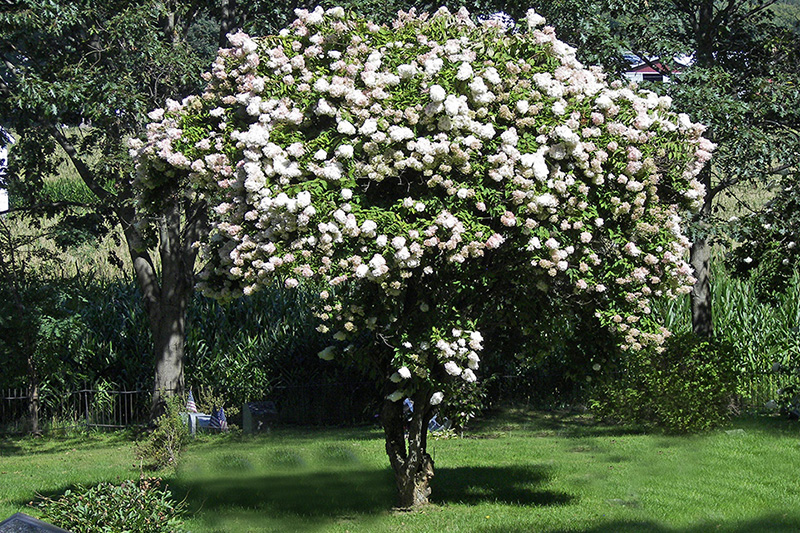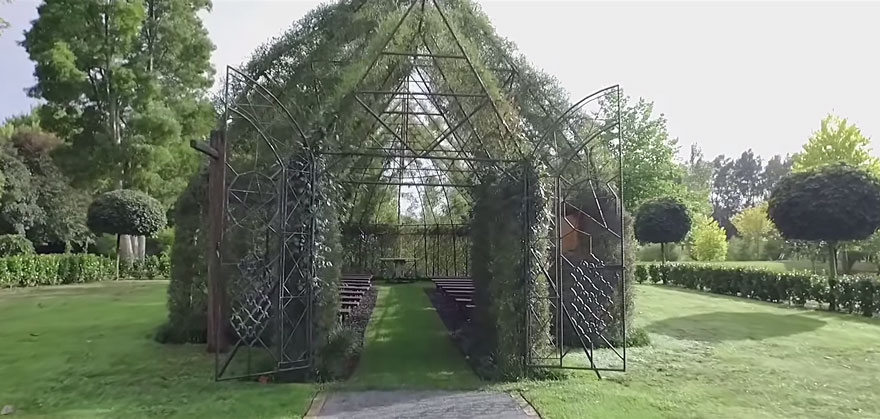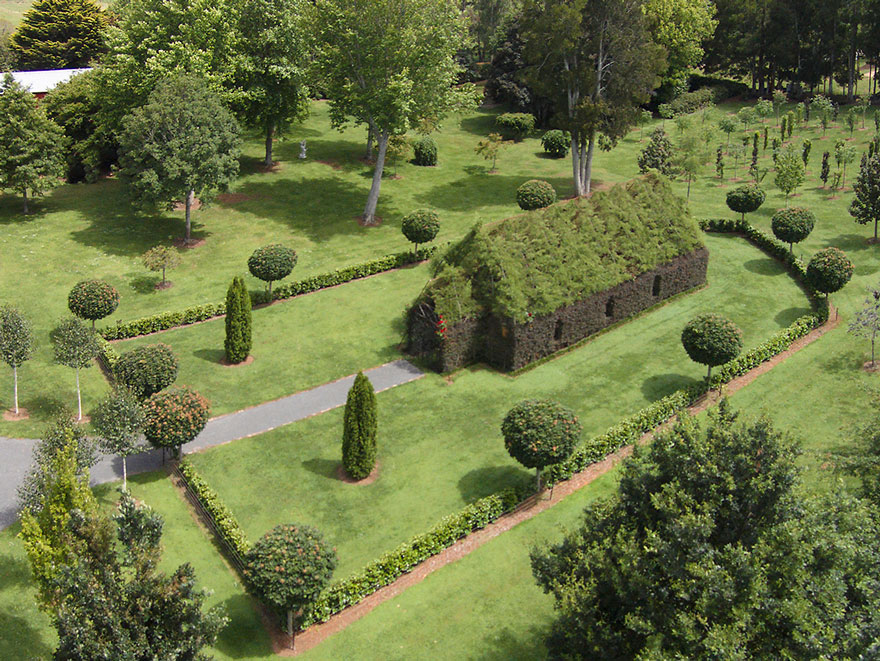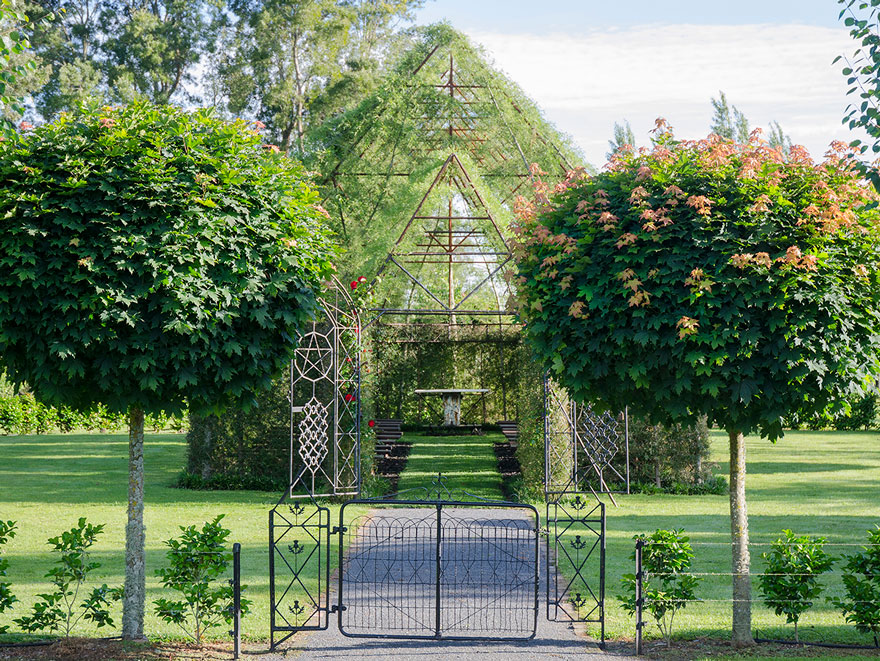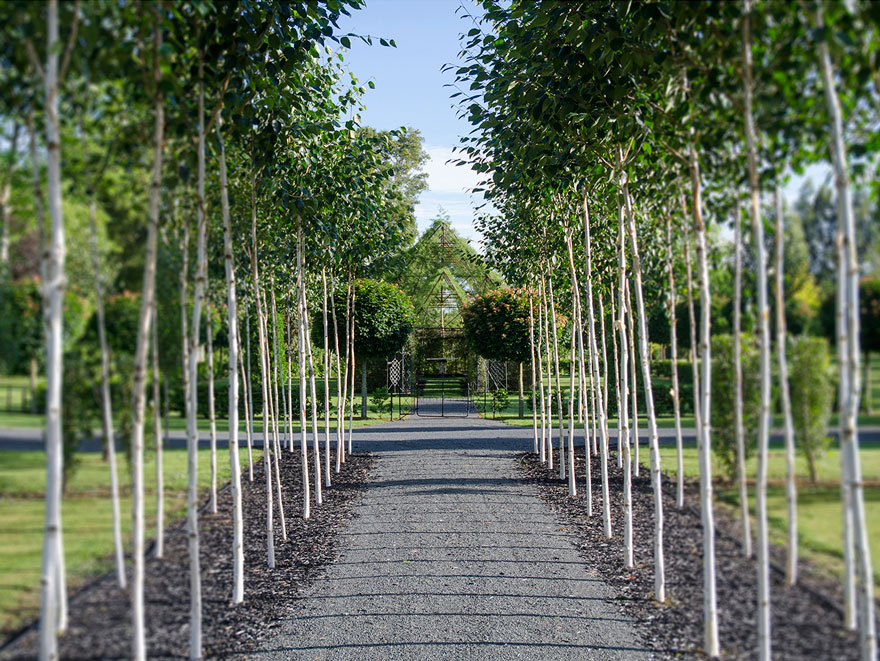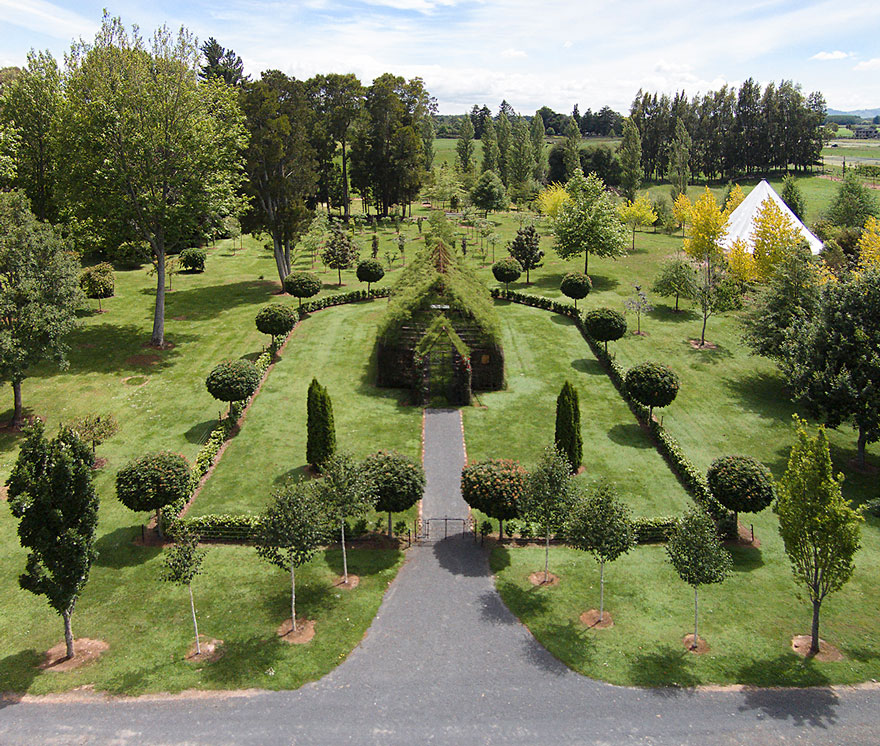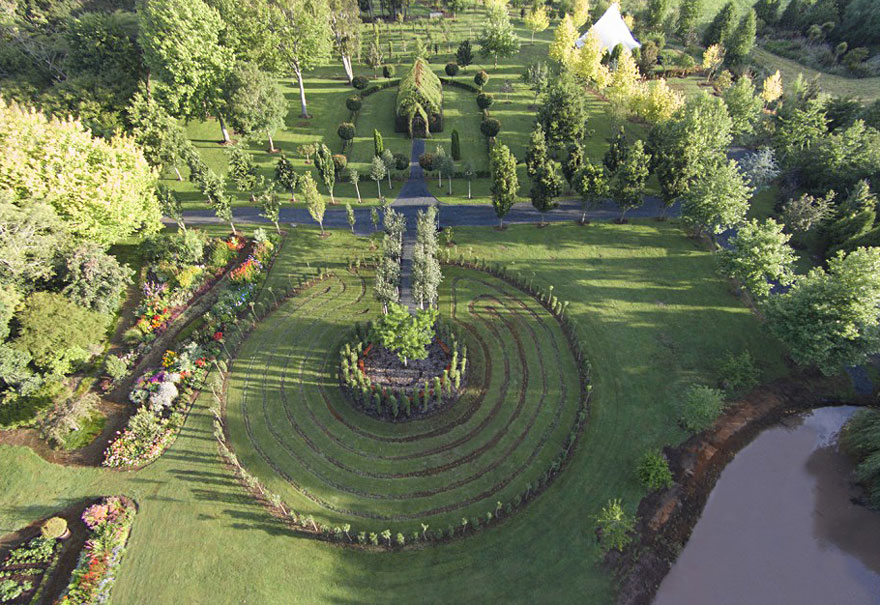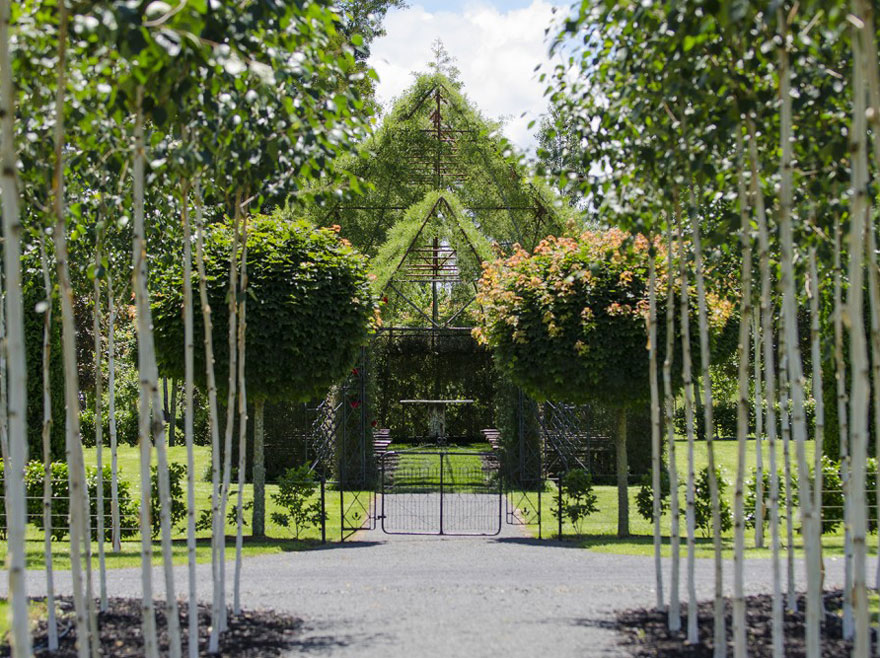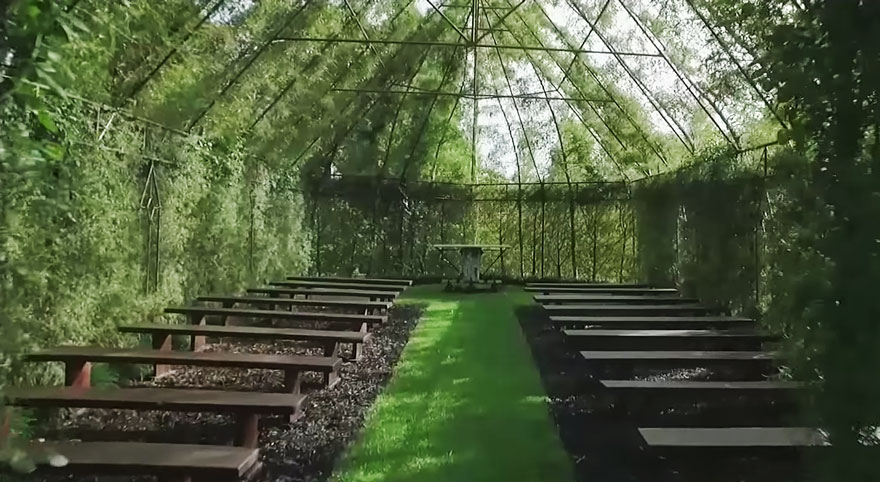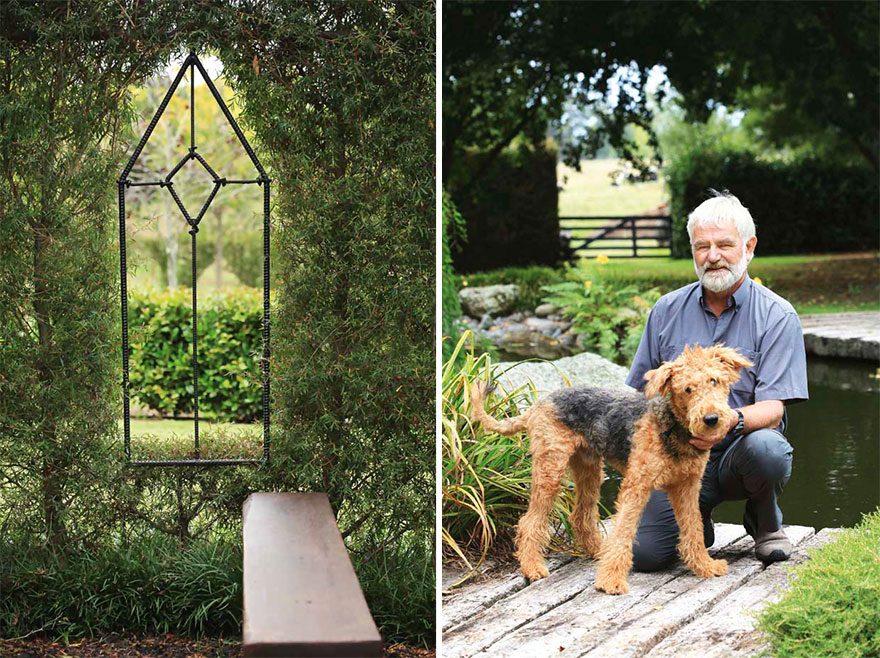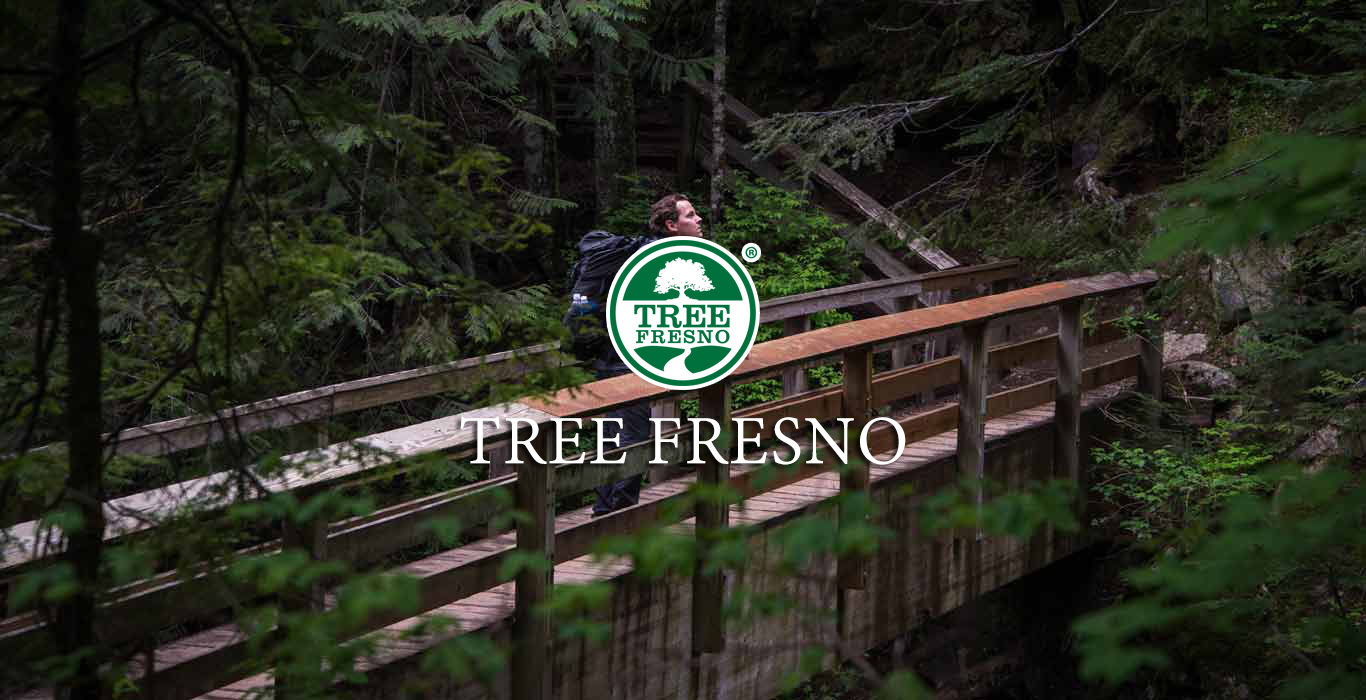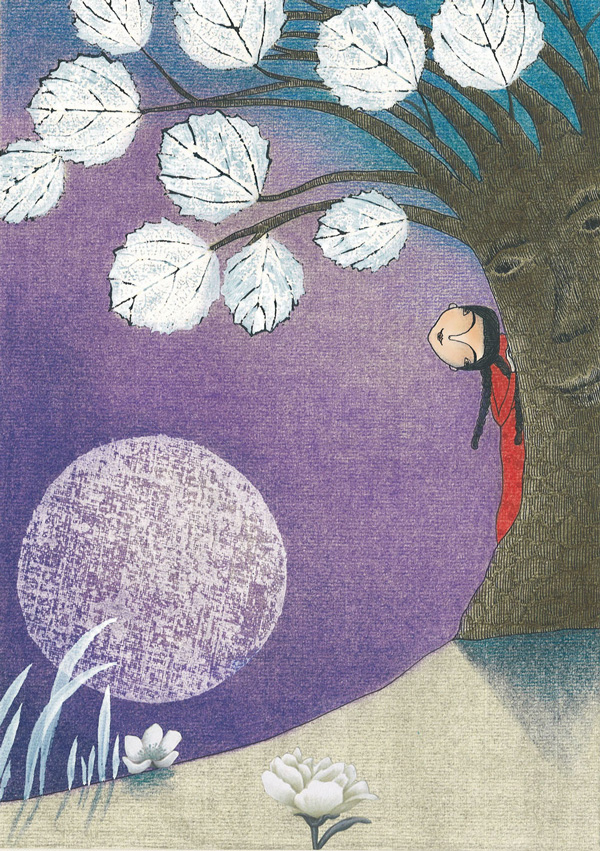
Thea’s Tree
An Illustrated Ode to Daydreaming, the Passage of Time, and the Gift of Human Imagination
by Maria Popova
“Go plant this seed… And give it water and love and conversation.”
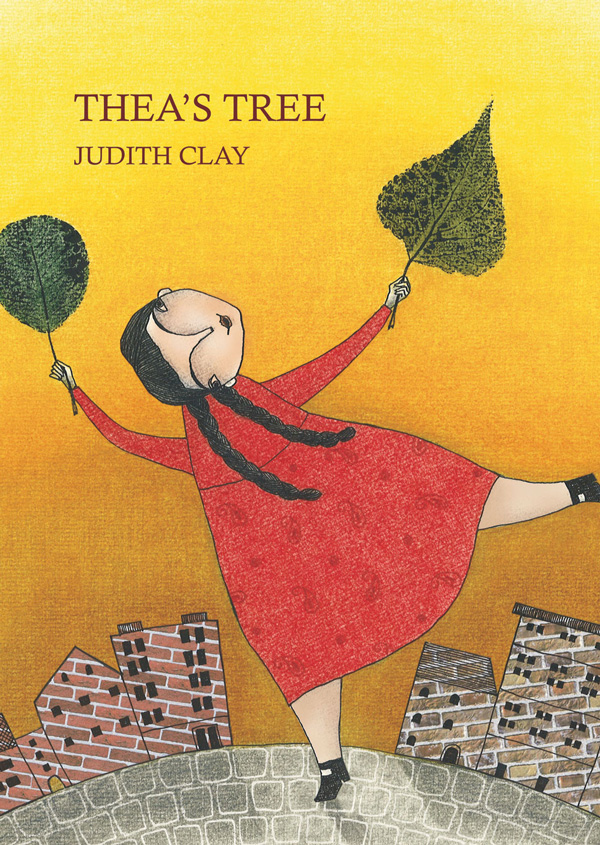
For the tellers of ancient myths, trees project the secret life of the spiritual world; for the great explainers of science, they remind us that we come from the sun; throughout history, trees have lent their shape to symbolic diagrams visualizing human knowledge. Humanity has always had a special relationship with trees — they are, after all, the oldest living unitary things in the world. Therein lies a potent metaphor that makes trees an exceptional storytelling device for some of the most difficult concepts with which the human mind tussles — notions like time, permanence, and impermanence. That’s precisely what author and illustrator Judith Clay explores with great gentleness and playful whimsy in Thea’s Tree (public library) — a belated but befitting addition to the best children’s books of 2014 by Indian independent publisher Karadi Tales, who bring to life wonderful and unusual stories from cultures around the world.
This particular masterpiece tells the story of a little girl named Thea, who lives in a city full of “houses, houses, and more houses,” and longs for nothing more than a tree — that exotic comrade in play and daydreaming, known to Thea only by her parents’ tales of their own childhood adventures.
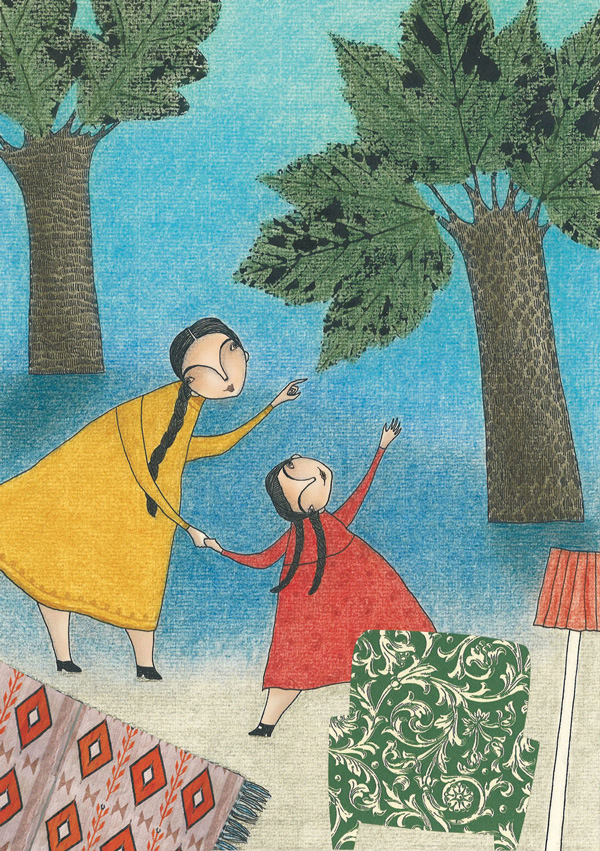
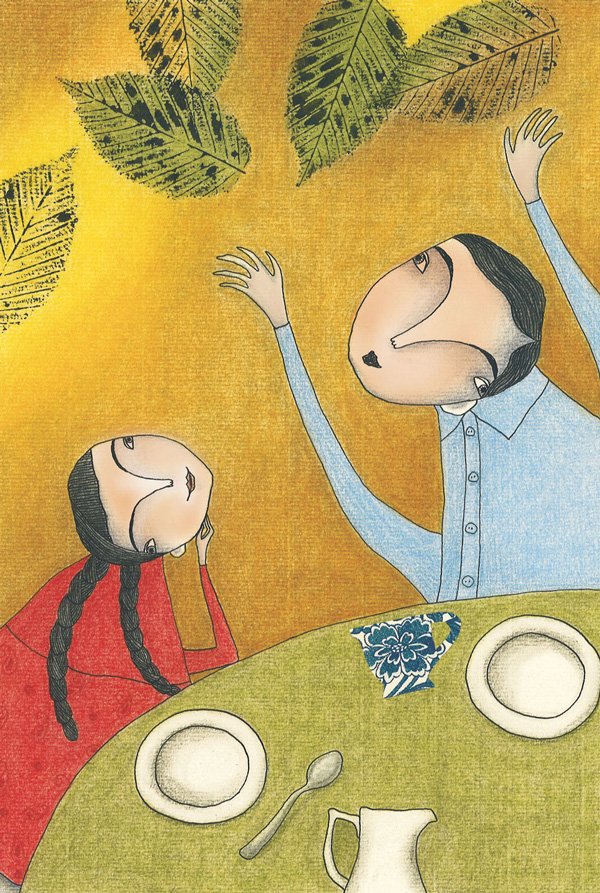
As she dreams of “trees to climb, trees to hide in, trees to sit under and dream,” something unusual happens one late October day — a solitary leaf comes “floating gently and quietly past Thea’s window.”
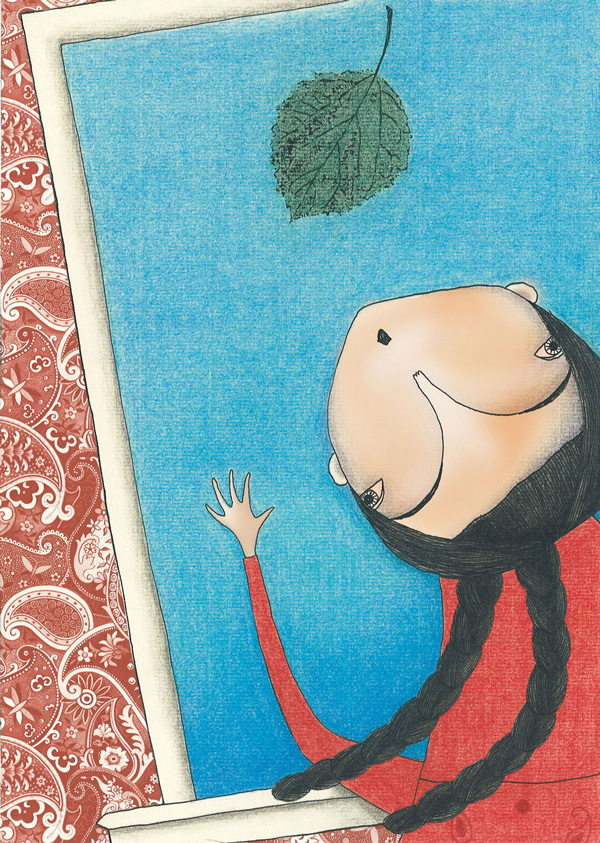
Clay’s uncommonly imaginative and tender illustrations bring to life that delicate dance between desire and despair familiar to all who have yearned for something intensely and have been suddenly exhilarated by the faintest possibility of attaining it.
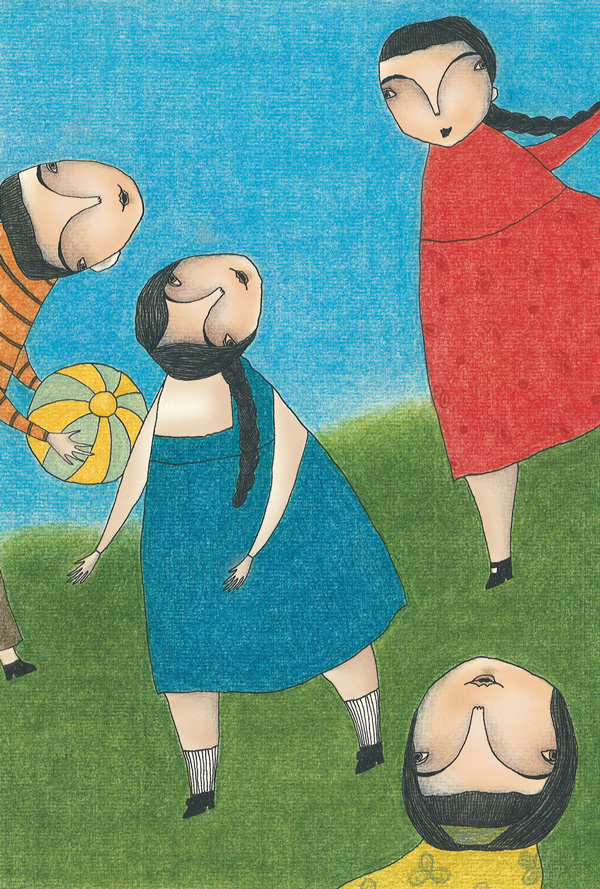
So uncontainable is Thea’s exhilaration that she rushes out to her friends, playing on the concrete street, and excitedly urges them to help her find the source of that hope-giving leaf. But they are unmoved, because “perhaps they didn’t even know what a tree was.” Indeed, implicit to the story is a subtle lamentation of how the legacy of the twentieth century has robbed children of essential childhood experiences like that vitalizing connection to the natural world.
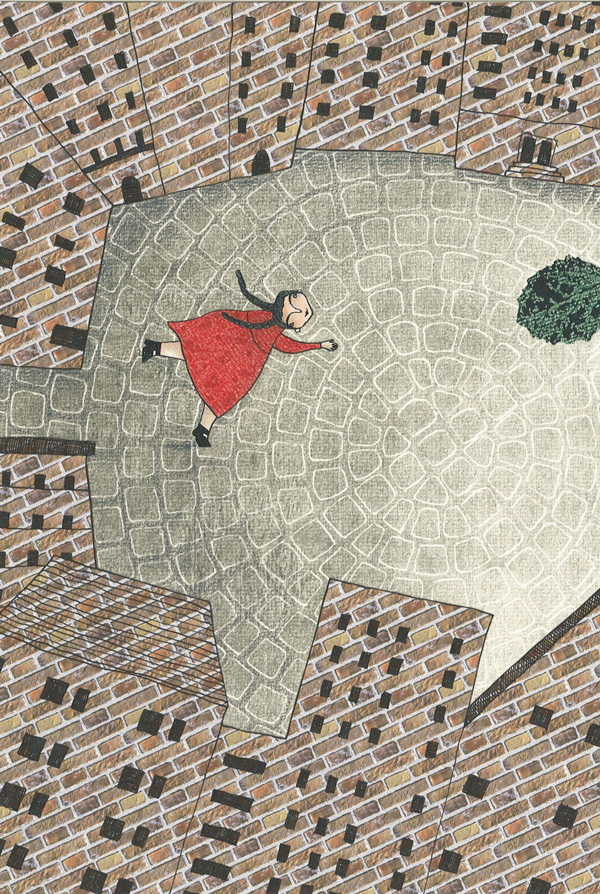
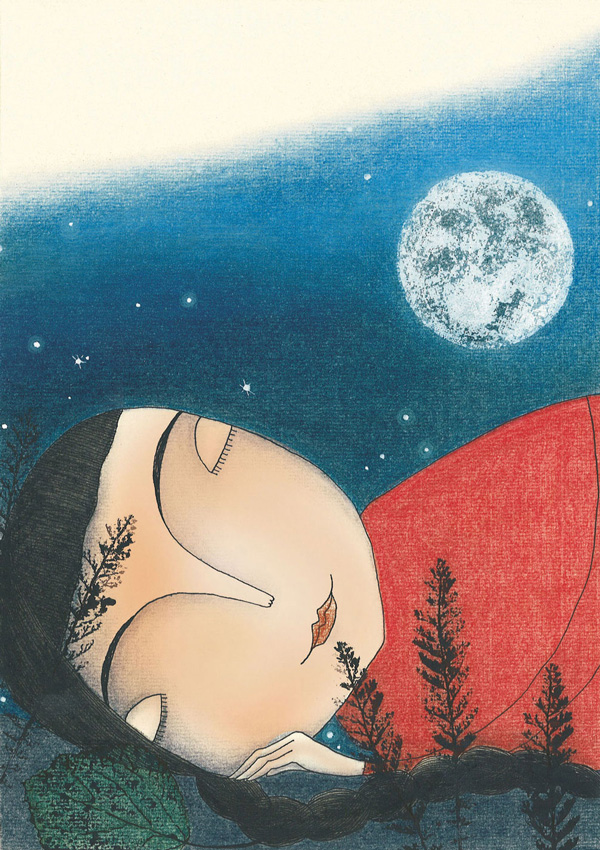
Lulled by the precious leaf’s rustle, Thea drifts smoothly into a dream. The leaf carries her, by way of a giant moon — that quintessential patron saint of the child’s innocence — to the beautiful tree from which it came.
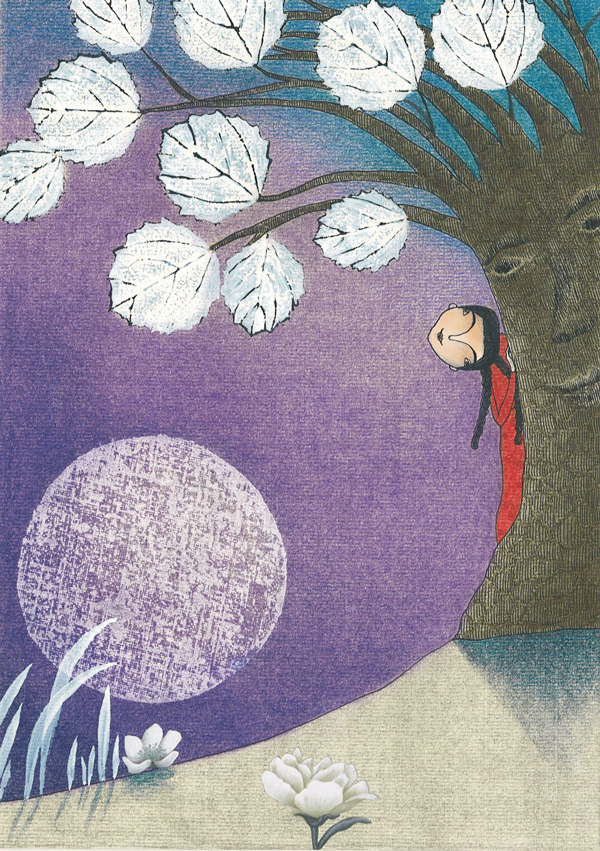
Once again, Clay’s subtle lament of how humanity has exploited the natural world comes to light as the tree speaks to Thea:
The tree saw right into Thea’s heart and found her deepest desire.
“Why do you want a tree, my dear?” the tree asked gently. “Do you want to build a hut or a boat or a fire with it? Do you want to make it into newspapers and books?”
Thea shook her head. Shyly, she said, “I want a tree for climbing and playing and to sit and dream under.”
“Then go plant this seed,” said the wise, white tree, “And give it water and love and conversation.”
When Thea awakes, she finds herself outside her house, seed in hand. She plants it into “a small patch of ground” and goes on to water it and love it and talk to it every day, until a tiny plant sprouts from the soil.
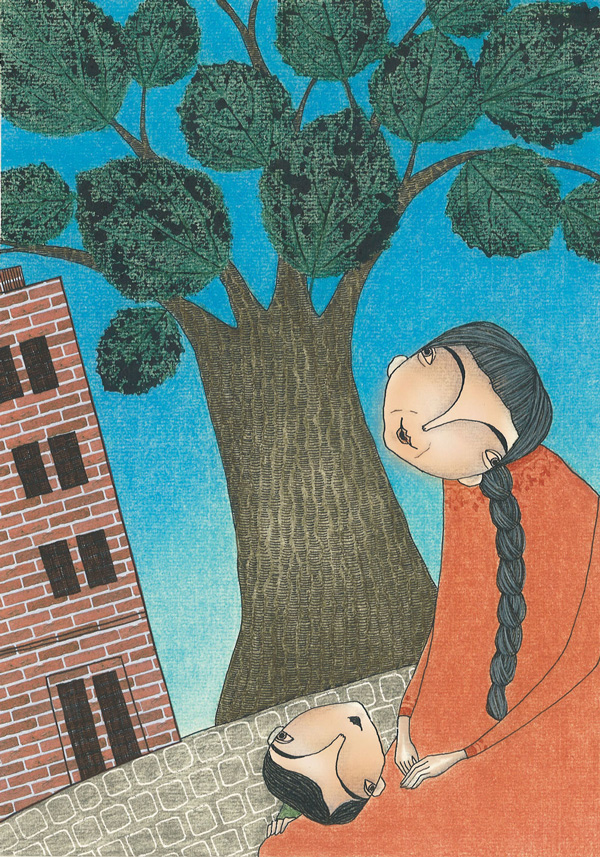
As Thea grows, so does the tree, which becomes a loyal dream-mate not only to her, and to her children, and to her grandchildren — a tender reminder that however much we may resist nature by replacing it with our houses and streets and treeless cities, the cycles of life are impervious to our resistance and peace only comes when we finally surrender to them and relinquish our vain resistance.
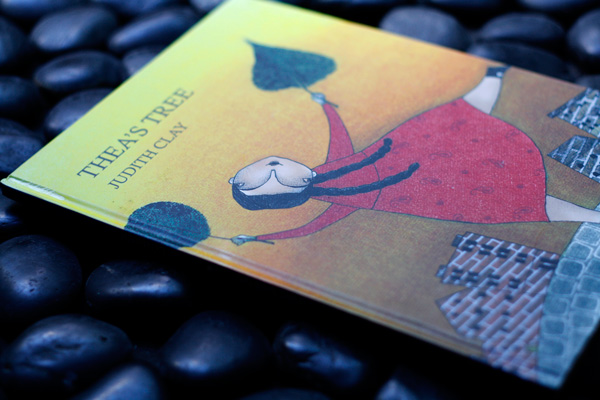
Thea’s Tree is absolutely magical from cover to cover. Complement it with The Farmer and the Clown, another belated addition to last year’s loveliest children’s books, then revisit a very different but equally rewarding Indian treasure celebrating trees, the breathtaking The Night Life of Trees.
Illustrations courtesy of Karadi Tales / Judith Clay
